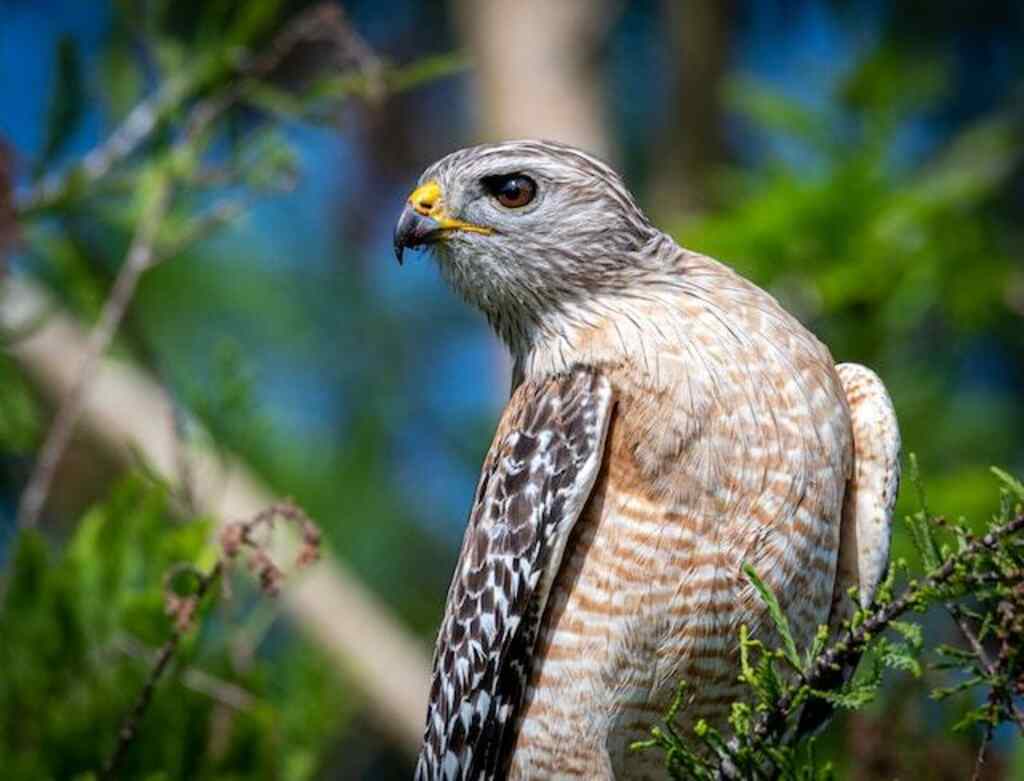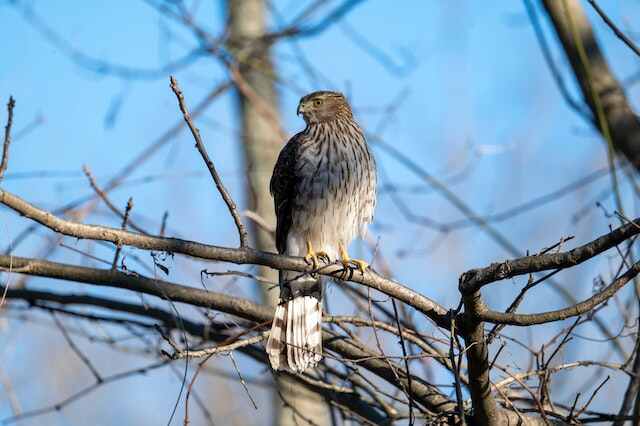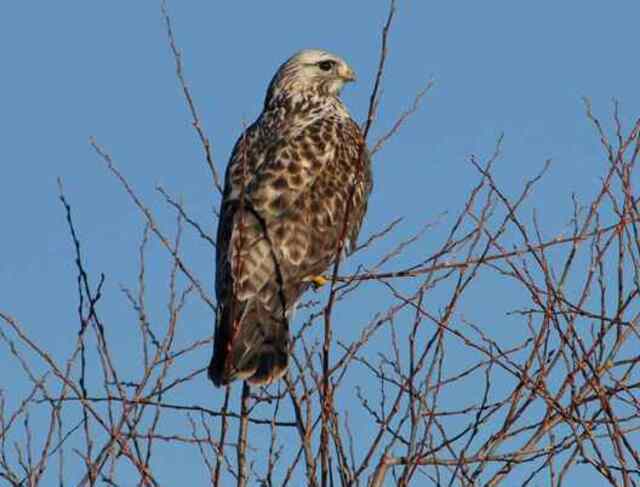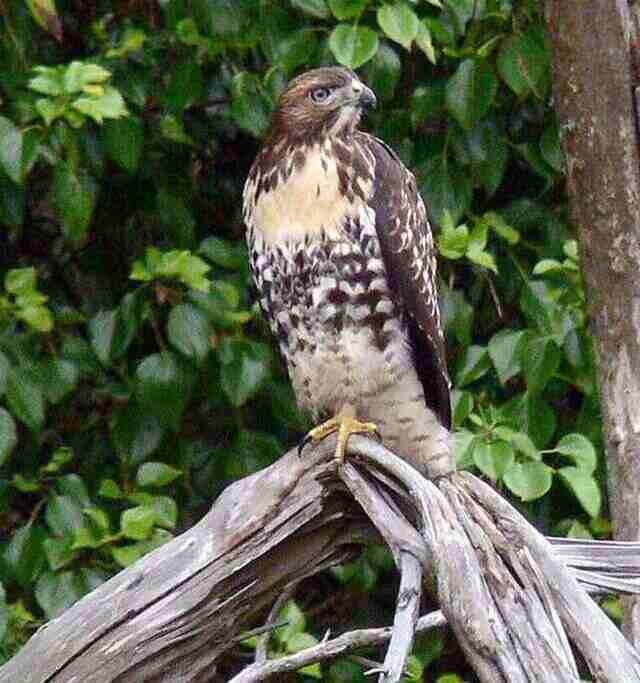Do Hawks Eat Groundhogs? These fascinating birds of prey wield extraordinary hunting skills, capturing a variety of prey, from rodents to mammals. But what about groundhogs?
Join us as we unravel the mysteries of hawks’ dietary preferences, their hunting tactics, and the intriguing dynamics between these feathered hunters and their burrowing adversaries.
Discover the role hawks play in groundhog population control and the secrets behind their encounters with these crafty creatures.
Table of Contents
- 1 Key Takeaways
- 2 Hawks’ Hunting Habits and Prey Preferences
- 3 Overview of Groundhogs’ Characteristics and Behaviors
- 4 How Do Hawks Hunt Groundhogs?
- 5 Do Hawks Eat Groundhogs?
- 6 The Role of Hawks in Controlling Groundhog Populations
- 7 Groundhogs’ Defense Mechanisms Against Hawks
- 8 Potential Risks for Hawks When Hunting Groundhogs
- 9 Other Predators of Groundhogs in North America
- 10 The Importance of Groundhogs in Their Ecosystem
- 11 Frequently Asked Questions
- 11.1 What is the average lifespan of a hawk?
- 11.2 How do groundhogs defend themselves against predators other than hawks?
- 11.3 What is the population of groundhogs in North America?
- 11.4 Are there any benefits to having groundhogs in a backyard or garden?
- 11.5 Can hawks hunt other animals besides groundhogs?
- 12 Conclusion
- 13 Author
Key Takeaways
- Hawks are carnivorous birds of prey with exceptional hunting skills that hunt a wide range of prey, including groundhogs.
- Groundhogs are herbivorous animals that use burrowing ability, sharp claws and teeth, and loud whistles to defend themselves from predators, including hawks.
- Hawks use sharp talons and beaks to capture and kill groundhogs, targeting young and inexperienced groundhogs for prey.
- Hawks may need to adjust their hunting strategies or choose other prey options to minimize risks associated with groundhog hunting.
Hawks’ Hunting Habits and Prey Preferences
Hawks, as predators, exhibit varying hunting habits and prey preferences depending on their species and habitat. Some hawks prefer to hunt in open fields, while others prefer to hunt in wooded areas. Some hawks hunt during the day, while others hunt at night.
Hawks’ prey preferences also vary depending on their species and habitat. Some hawks prefer small mammals such as mice and voles, while others prefer birds or reptiles.
Hawks use a variety of hunting techniques, including soaring and gliding, hovering, and stooping.
Soaring and gliding are used to cover large areas of ground in search of prey, while hovering is used to hunt stationary prey. Stooping is used to attack prey from above, diving at high speeds to catch it.
Now, let’s move on to an overview of groundhogs’ characteristics and behaviors.
Overview of Groundhogs’ Characteristics and Behaviors
With their rotund bodies and distinctive burrowing habits, groundhogs are often known as the architects of the animal kingdom.
These rodents are typically found in fields, meadows, and forests across North America. They are herbivorous, feeding on a variety of vegetation such as grass, leaves, and bark.
Groundhogs are considered seasonal eaters and spend the majority of their time during the warmer months consuming food to prepare for hibernation during the winter.
Their burrowing habits also play a vital role in their survival, providing them with protection from predators and shelter during harsh weather conditions.
Groundhogs are known to create complex underground tunnels with multiple entrances and chambers.
Understanding the groundhog’s diet and habitat is crucial in determining how they interact with their surrounding ecosystem.
In the next section, we will explore how hawks, as predators, hunt these elusive rodents.
How Do Hawks Hunt Groundhogs?
The hunting process of groundhogs by predators such as hawks involves strategic methods of tracking and capturing their prey. Hawks are known to be versatile hunters and have developed various hunting techniques to catch groundhogs.
One of these techniques is called the ‘stoop,’where the hawk flies high above the ground and then dives at a high velocity to catch its prey.
Another technique is the ‘perch and pounce,’where the hawk perches on a tree or pole and waits for the groundhog to come out of its burrow before swooping down to catch it.
Hawks also use their sharp talons and beaks to capture the groundhog and quickly kill it.
Prey selection is also an essential factor in the hunting process, and hawks often target young and inexperienced groundhogs that are easier to catch.
Overall, hawks play a crucial role in controlling groundhog populations by keeping their numbers in check.
Do Hawks Eat Groundhogs?
Yes, hawks do eat groundhogs. Groundhogs are among the prey that hawks hunt. Hawks are skilled predators known for their diverse diet, which includes small rodents and larger mammals.
Understanding how hawks hunt groundhogs and the dynamics of this predator-prey relationship provides insights into their ecological role and the control of groundhog populations.
The Role of Hawks in Controlling Groundhog Populations
Controlling groundhog populations is a crucial ecological process that helps maintain the balance of ecosystems.
Hawks play a significant role in controlling groundhog populations by preying on them, which helps prevent groundhog overpopulation.
As such, it is important to support hawk conservation efforts as they contribute to the overall health of ecosystems.
In addition, hawks are an important part of the food web, and their presence ensures that other animals in the ecosystem have a sufficient food supply.
However, groundhogs have developed defense mechanisms against hawks, which we will explore in the next section.
Groundhogs’ Defense Mechanisms Against Hawks
Groundhogs have developed an array of defensive tactics to evade their predators, including aerial threats from hawks.
One of their most effective defense mechanisms is their burrowing ability, which allows them to quickly retreat to the safety of their underground burrows when threatened.
They also have sharp claws and teeth, which they can use to fight back against predators.
Additionally, groundhogs have keen senses and are able to detect approaching predators from a distance, giving them ample time to take evasive action.
To counter these defenses, hawks have developed strategies such as hovering high above the ground and swooping down to catch their prey off guard.
However, despite their hunting prowess, hawks are not immune to the potential risks of hunting groundhogs, which we will explore in the subsequent section.
Potential Risks for Hawks When Hunting Groundhogs
Potential risks arise for raptors when preying on groundhogs due to the latter’s physical defenses and behavioral adaptations.
Groundhogs have strong front teeth and claws that can inflict serious injuries on predators. Additionally, they are known to emit loud, high-pitched whistles that can alert other animals of potential danger.
These adaptations make it difficult for hawks to capture and kill groundhogs without risking injury or exposing themselves to other predators.
Moreover, groundhogs are known to dig complex burrow systems that offer them protection from predators, which further increases the risks for hawks during groundhog hunting.
In light of these prey dynamics, hawks may need to adjust their hunting strategies or choose other prey options to minimize the risks associated with groundhog hunting.
Other predators of groundhogs in North America include foxes, coyotes, and bobcats, which will be discussed in the subsequent section.
Other Predators of Groundhogs in North America
The food chain in North America includes a variety of predators that hunt groundhogs, including foxes, coyotes, and bobcats, who all have their own unique hunting strategies to catch their prey.
Coyotes, in particular, are known to prey on groundhogs, and have been observed stalking them in their underground burrows.
While groundhogs are known for their burrowing abilities, they are not always successful in evading the predatory advances of coyotes, who are skilled hunters and can use their sense of smell and hearing to locate their prey.
Groundhogs also face threats from other predators such as foxes and bobcats, who use different hunting techniques to catch their prey.
Foxes, for instance, are known to use their speed and agility to catch groundhogs, while bobcats use their powerful front paws and sharp claws to grab their prey.
Despite these threats, groundhogs continue to thrive in their natural habitats, which include open fields, wooded areas, and suburban neighborhoods.
Understanding the dynamics of coyote predation and groundhog habitat can help us appreciate the complex relationships that exist between predators and their prey in North America.
As we explore the importance of groundhogs in their ecosystem, we will see how their unique characteristics contribute to the health and well-being of the natural world around them.
The Importance of Groundhogs in Their Ecosystem
Ecologists recognize the significance of groundhogs in maintaining the balance of their ecosystem.
Groundhogs play a crucial role in their habitat as they are herbivores and contribute to the nutrient cycling process by consuming vegetation.
Additionally, they are a food source for many predators such as foxes, coyotes, and snakes.
Their burrowing behavior also provides shelter for other animals such as rabbits, skunks, and opossums.
The conservation of groundhogs is important for the preservation of these ecological processes and the maintenance of the biodiversity of their habitat.
By protecting groundhog populations, we are also protecting the entire ecosystem that they are a part of.
Frequently Asked Questions
What is the average lifespan of a hawk?
Hawk behavior and migration patterns are influenced by factors affecting their lifespan. The average lifespan of a hawk ranges from 10 to 20 years, depending on species and habitat. Studying these birds can reveal insights into the intricacies of nature’s cycles.
How do groundhogs defend themselves against predators other than hawks?
Groundhogs defend themselves against predators through their burrow defense system and vocalization warnings. They dig intricate tunnels with multiple exits and use a distinctive whistle to alert others of approaching danger.
What is the population of groundhogs in North America?
Amidst the vast expanse of North America, groundhog population numbers vary by habitat. Groundhogs are herbivorous and primarily consume vegetation. However, their numbers are constantly fluctuating due to a range of ecological factors.
Are there any benefits to having groundhogs in a backyard or garden?
Groundhogs can provide benefits to backyard ecology by aerating soil and promoting diversity. However, they may also cause damage to gardens and structures. Hawk diets play a role in ecosystem balance but their predation may decrease groundhog populations.
Can hawks hunt other animals besides groundhogs?
It may come as a surprise that hawks are not limited to hunting groundhogs. In fact, hawks are skilled predators with a variety of hunting techniques. Hawk predation is a complex topic that warrants further investigation.
Conclusion
In conclusion, hawks have a natural inclination towards groundhogs, which serve as one of their preferred prey. Groundhogs have many characteristics and behaviors that make them an attractive target for hawks, such as their large size, slow movements, and tendency to live in open areas.
Hawks use their sharp talons and beaks to hunt groundhogs, which can be a valuable method of controlling their populations.
Despite their vulnerability to hawks, groundhogs have several defense mechanisms to protect themselves.
These include their ability to quickly retreat into their burrows and their keen sense of hearing and sight.
While hawks can pose a significant threat to groundhogs, they also face potential risks, such as injury from groundhog bites and the possibility of being attacked by other predators.
As the adage goes, ‘Nature is not a place to visit. It is home.’
Groundhogs play an essential role in their ecosystem as herbivores and burrowing animals. While hawks may prey on groundhogs, their presence in the ecosystem is crucial for maintaining balance and diversity.
Understanding the interaction between these two species can provide insight into the complex dynamics of predator-prey relationships and the crucial role that each species plays in the natural world.








